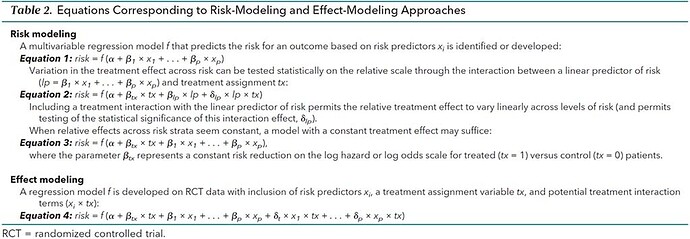I have been reading a bit about prediction modelling but had only really considered these models in the context of predictions based on clinical characteristics of patients. But obviously one might want to make predictions also including a treatment. There seems to be a literature out there on risk modelling vs treatment effect modelling as two approaches in this case.
I came across this paper and I found Table 2 particularly helpful.
I’m wondering if people favour a particular approach?
Treatment effect modelling (essentially interacting treatment with each baseline covariate) seems more straightforward but is there a greater risk of bias?
From what I can understand for the risk modelling approach if using RCT data to create a prediction model:
- Create the model using all covariates (additively) but excluding treatment (using all the data) and predict the outcome on the linear scale.
- Create another model with an interaction between that linear prediction and treatment group.
- If the interaction term is not statistically significant, go back to step 1 but this time include the treatment variable.
- But if the interaction is statistically significant, do we go back to step 1 with an interaction between the treatment variable and each covariate? (although I’m guessing not because this is really the treatment effect modelling approach).
Thanks.
